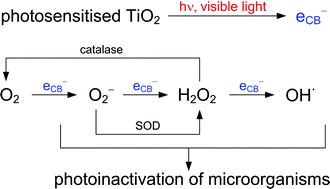Visible light inactivation of bacteria and fungi by modified titanium dioxide
Abstract
Visible light induced photocatalytic inactivation of bacteria (Escherichia coli, Staphylococcus aureus, Enterococcus faecalis) and fungi (Candida albicans, Aspergillus niger) was tested. Carbon-doped


 Please wait while we load your content...
Please wait while we load your content...